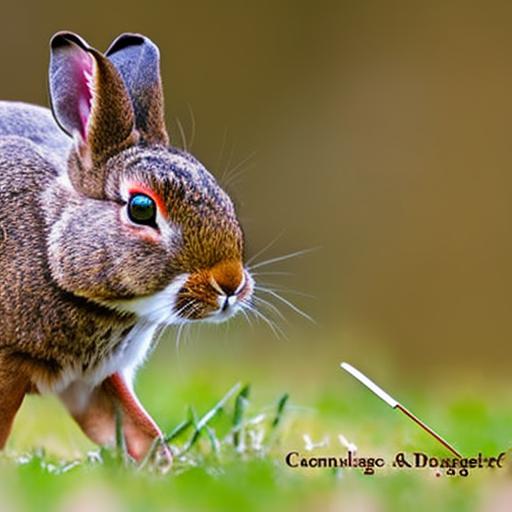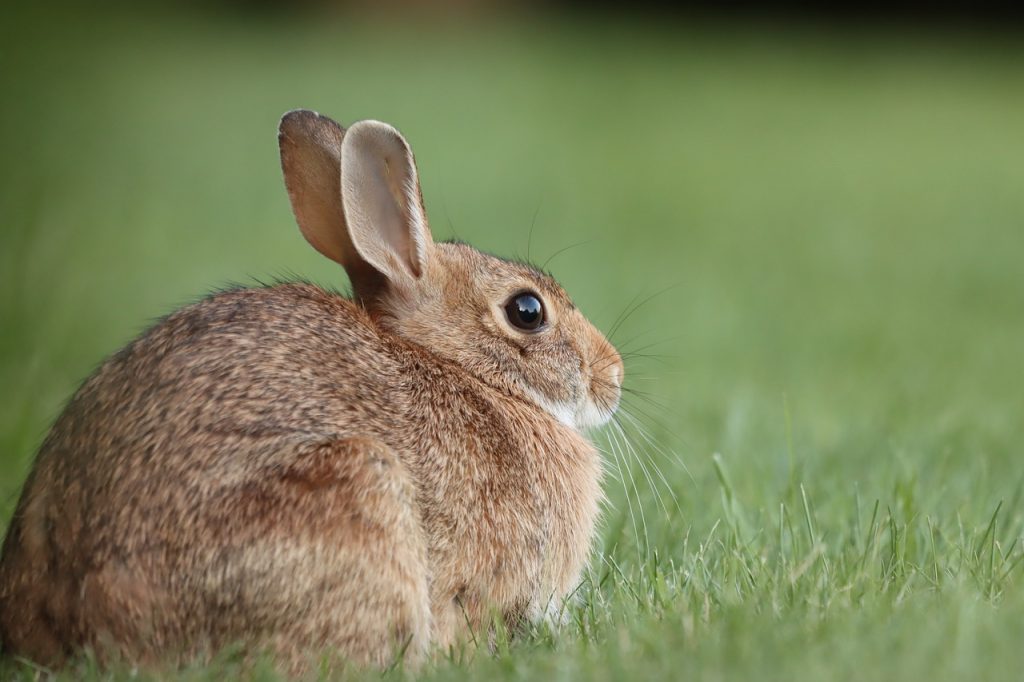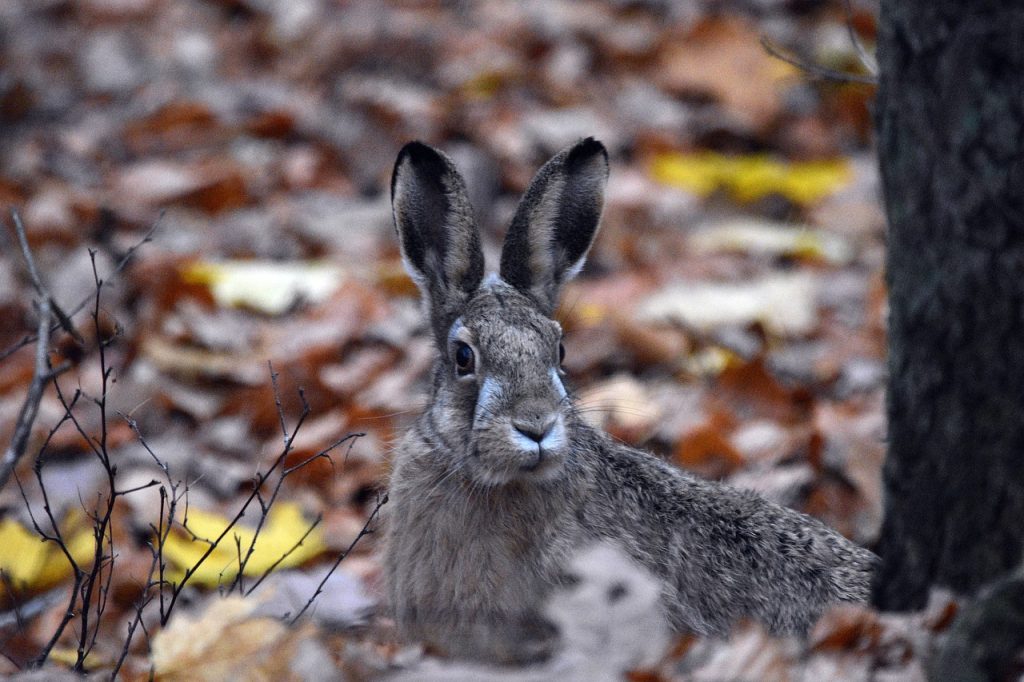Your cart is currently empty!

Hunting Rabbit with Shotgun: The Top 5 Mistakes Everyone Makes!

Table of Contents
Introduction
Ah, rabbit hunting, a timeless tradition! Whether you’re a seasoned deer hunter or someone just dipping their toes into the world of hunting, chasing after these little hoppers with a shotgun can be both thrilling and, surprisingly, quite challenging. I’ve spent many sunrises in the brush, waiting for that perfect moment to take a shot. But let me tell you, over the years, I’ve made my fair share of blunders, some almost comically bad! The allure of rabbit hunting isn’t just about the catch; it’s the dance of anticipation and adaptability. Transitioning to rabbit hunting or even just adding it to your repertoire requires understanding the unique quirks of these creatures. But worry not! I’m here to share a bit of my hard-earned wisdom and point out some common mistakes that, believe it or not, many of us make—yes, even seasoned hunters like yours truly! I will go through the 5 main mistakes below:
1. Not Adapting to the Rabbit’s Behavior
Oh, rabbits! They’re not just another game on the list; they’re an entirely unique ball game, quite literally. You see, while deer or pheasants might have their distinct patterns, rabbits? Well, they’re in a league of their own.
Firstly, unlike other games you might have hunted, rabbits have a knack for being unpredictably predictable. Sounds contradictory, right? But hear me out. While they do have certain behaviors they lean towards—like freezing when they sense danger or darting into a burrow—the exact moment they choose to do so can often catch you off-guard. So, those long waits when you’re out in the field are as much about understanding these furry little creatures as they are about getting that perfect shot.
Now, let’s talk rabbit real-estate. Their homes—burrows and thickets—are strategically chosen. It’s essential to understand the rabbit’s favorite hideouts. Look for dense brush, overgrown fields, and woodland edges. Knowing where they might bolt to or where they feel safest can be a game-changer (pun intended).

Lastly, if you’re really keen on upping your game, invest time in observation. Before you even think of pulling the trigger, spend a day or two just watching. Notice their feeding patterns, how they react to various sounds, and their playful chases. This might sound like a lot of work for a small game, but trust me, the more you understand them, the higher your success rate will be.
So, before you head out shotgun in hand, take a step back, do a bit of rabbit recon, and equip yourself with not just ammo, but knowledge. It’s your most potent weapon out there.
2. Choosing the Wrong Ammunition:
Let’s chat ammo, shall we? Hunting is as much about skill and patience as it is about having the right tools. And when it comes to hunting rabbit with a shotgun, the ammunition you choose can make a world of difference.
Variety is the Spice of the Game:
Every game is different, and so is the ammunition made for them. Just as you wouldn’t use a sledgehammer to hang a picture, you wouldn’t use deer slugs to hunt rabbits. While the principle of firing a projectile remains consistent, the size, spread, and impact vary widely. For example, larger game might require ammunition that delivers a significant blow, ensuring a quick and ethical kill. But rabbits? They’re delicate creatures, and using heavy ammo could obliterate them, making the hunt both unethical and, frankly, messy.
The Rabbit-Ready Recommendation:
For our fuzzy friends, the consensus among many seasoned hunters is to go for smaller shot sizes, typically between #4 to #6. This range provides a good balance of spread and impact, ensuring you have a higher chance of a clean hit without causing unnecessary damage. Additionally, opt for lighter loads, as you really don’t need a powerful charge to hunt rabbits effectively.
A Missed Shot and a Missed Opportunity:
One of the frequent oversights many hunters make, especially those new to the rabbit hunting scene, is overlooking the importance of specialized ammunition. Some assume that any shotgun shell will do the trick, but this couldn’t be further from the truth. Using the wrong ammunition can lead to missed shots, wounded animals, or an unsatisfactory hunt. And trust me, nothing feels worse than realizing you missed out due to something as basic as not picking the right shells.
To sum it up, when you’re prepping for your next rabbit hunt, give your ammunition choice the attention it deserves. It’s an investment in success!
3. Overlooking Terrain and Positioning:
Alright, fellow hunters, let’s dive into a topic that’s as foundational as your trusty shotgun: the terrain and your positioning within it. Mother Nature’s vast canvas provides an array of landscapes, and understanding them is pivotal to your rabbit hunting success.
Every Terrain Tells a Tale:
Let’s paint a picture. Imagine you’re used to hunting in open fields and suddenly decide to venture into dense woodlands for your rabbit chase. The principles might remain similar, but the dynamics change dramatically. Open fields offer broader visibility but fewer hiding spots, while woodlands provide ample cover at the cost of reduced sightlines. Similarly, marshlands or hilly terrains come with their own set of challenges and advantages. Your understanding of the terrain affects not just where you find rabbits but how you approach them.
Positioning Pitfalls:
One of the blunders many of us, including yours truly in the early days, make is sticking to one preferred position regardless of the terrain. Crouching behind a bush might work wonders in one setting but could leave you frustratingly rabbit-less in another. Another common error? Not taking into account the sun’s position. Being inadvertently backlit can turn you into a clear silhouette for those sharp-eyed bunnies.
The Art of the Vantage Point:
Positioning isn’t just about where you sit or stand; it’s about the perspective it offers. Look for spots that give you a broad overview of rabbit routes or near their frequent feeding spots. Elevated positions in hilly terrains or staying downwind in open fields can give you the drop on unsuspecting rabbits. As for stalking, slow and steady wins the race. Learn to move fluidly, minimize noise, and remember: sometimes, patience and letting the game come to you can be the most effective tactic.
4. Neglecting Noise Discipline:
We hunters, in our pursuit of the perfect shot, sometimes forget one fundamental fact: nature’s got ears, especially those jittery rabbits. Let’s delve into the oft-underestimated aspect of hunting – the art of silence.
The Acute Ears of the Rabbit:
Have you ever stopped to admire those large, tufted ears of the rabbit? They’re not just for show. Rabbits possess an uncanny ability to pick up on the slightest of sounds, from distances you wouldn’t believe. Their ears act as radar dishes, always on alert for potential threats. It’s one of their primary defense mechanisms, and trust me, even the softest footfall doesn’t go unnoticed.

The Symphony of Mistakes:
We’ve all been there. Stalking your prey, getting into the perfect position, only to step on the world’s crunchiest twig or fumble with our gear, and suddenly, all you’re left with is the sight of a rabbit tail disappearing into the underbrush. Common culprits? Gravel paths, dried leaves, clanging equipment, or even the audible ‘click’ of safety disengagement can send rabbits bolting.
Mastering the Art of Stealth:
So, how do you maneuver the minefield of woodland acoustics? First and foremost, be conscious of where you step. Opt for softer ground where possible and tread lightly. A great tip I learned from an old-timer: walk heel to toe, it naturally softens your footfalls. As for your gear, ensure it’s secured and silent. Consider using gear bags with silent closures, and practice accessing your items without the associated ruckus. Before you approach hunting spots, pause, and listen. Tune into the sounds of nature; it’ll give you a sense of how much noise you’re making in contrast.
Remember, in the world of rabbit hunting, silence isn’t just golden; it’s the difference between a successful hunt and going home empty-handed. Embrace the quiet, and let it guide your steps.
5. Overconfidence in Shot Distance:
Alright, let’s talk about a trap many of us hunters fall into, no matter how seasoned we are: overestimating our shot distance. It’s one thing to have confidence in your skill, but in the realm of rabbit hunting, a smidge of overconfidence can lead to a whole lot of missed shots.
Distance Deception:
Estimating distances accurately, especially in the unpredictable outdoors, can be a tricky affair. For beginners, it’s a common stumbling block. Different terrains play tricks on our eyes; a clearing in a forest might seem closer than it is, while the vast openness of a field can make distances seem elongated. Add to this the quick movements of a rabbit, and you’ve got yourself a challenging target.
Practice Makes Perfect:
The best way to hone your distance judgment? Practice, practice, and more practice. But not just any practice—varied practice. Shoot in different terrains, from woodlands to open fields. Try your hand on windy days, under the bright noon sun, and during the dimness of dawn or dusk. Each condition offers its unique challenges and learning moments. The more varied your experiences, the better you’ll become at quickly assessing and adapting to your surroundings.
Tips for Tightening the Gap:
A solid tip for distance estimation: use known objects as reference points. If you’ve spent time in an area, use trees, rocks, or other landmarks to gauge your distance to the target. Another trick is to use binoculars or rangefinders with distance-estimating reticles. But beyond equipment, develop a habit of mentally marking distances. For instance, during your off days, pick random objects and guess their distance, then measure to see how close you were. Over time, you’ll sharpen this skill immensely.
In the end, it’s crucial to remember: overconfidence can be a hunter’s Achilles heel. It’s always better to take an extra second to assess and be sure of your shot rather than rushing and missing the mark. Aim true, and trust the process.
Related Questions:
What are the best times of the day for rabbit hunting?
Well, just like us, rabbits have their favorite times to be up and about. Typically, the wee hours of dawn and the soft, dimming light of dusk are prime rabbit times. These “crepuscular” critters are most active during these periods, giving you the best shot (pun intended) at spotting and tracking them. So, set that alarm or plan for a late afternoon hunt to maximize your chances.
How does weather affect rabbit behavior and hunting success?
Ah, weather! A rabbit’s behavior is quite influenced by it. On cooler, overcast days, you might find them active for more extended periods, even outside their usual dawn and dusk routines. But when it’s too hot or rainy, they often stay hunkered down in their burrows or under shelter. Snow can make tracking easier, but heavy rain or wind? They can make your hunt a tad challenging, dampening sounds and making the terrain unpredictable.
Are there any ethical considerations when hunting rabbits?
Absolutely. Ethics is at the heart of hunting. Always aim for a clean, swift kill to minimize suffering. Only hunt during designated seasons to ensure rabbit populations remain healthy and sustainable. Also, respect the land and habitats—leave no trace. And remember, hunting isn’t just about the kill; it’s about connecting with nature, understanding the ecosystem, and ensuring we’re responsible stewards of the environment. Hunt with respect and gratitude.
Summary
In the world of hunting, every game has its intricacies, and our hopping friends are no different. Whether it’s adapting to their unpredictable behavior, selecting the right ammo, or simply finding the perfect spot to hunker down, rabbit hunting offers a unique challenge that keeps us on our toes. It’s a dance of patience, skill, and continuous learning. Always remember that the path to mastery is filled with little lessons, and every mistake, as frustrating as it might be in the moment, brings us one step closer to becoming a more adept hunter. Approach each hunt with an open mind, respect for our furry adversaries, and a desire to learn. Over time, you’ll find that these challenges are what make the chase truly rewarding. So, keep refining, keep learning, and, most importantly, enjoy the process. Happy hunting!

Herb has been a longtime lover of the outdoors. Whether it be hunting, camping, fishing or just getting outside to reset. Proud father and animal lover. Bourbon anyone?

by
Tags:
Comments
2 responses to “Hunting Rabbit with Shotgun: The Top 5 Mistakes Everyone Makes!”
-
[…] a nutshell, when you’re aware of the rabbit’s breeding behaviors and adjust your hunting techniques accordingly, you’re setting yourself up for success. It’s all about syncing up with […]
-
[…] If you’re an avid hunter in Pennsylvania, you may be interested in exploring different hunting opportunities beyond elk. While elk hunting is undoubtedly exciting, there are other game species that can provide equally thrilling experiences. One such option is rabbit hunting with a shotgun. This article from Old Oak Syndicate provides valuable insights and tips on how to make the most of your rabbit hunting adventures. From choosing the right shotgun to understanding rabbit behavior, this article covers it all. So, if you’re looking to diversify your hunting experiences in Pennsylvania, check out this informative article on rabbit hunting with a shotgun. […]

Categories
- Big Game Hunting (301)
- Deer (202)
- Reviews (3)
- Shooting (16)
- Slingshot (1)
- Small Game Hunting (42)
- Upland Hunting (126)
- Waterfowl Hunting (3)





Leave a Reply